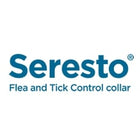
Cats are more than just our pets—they're family. Just like us, they need proper nutrition to stay healthy, active, and happy. Feeding your cat a well-balanced diet is essential to support their overall health and reduce the risk of potential medical problems down the line. In this blog, we’ll explore what makes up a healthy diet for cats, the types of food to consider, and how to tailor your cat’s meals based on their age, lifestyle, and health needs.
Why a Balanced Diet Matters for Cats
Cats are classified as obligate carnivores, meaning their bodies are biologically designed to rely on animal-based proteins for proper growth, energy, and overall health. Unlike dogs or humans, cats have unique dietary needs that must be met through high-quality, species-appropriate food. A lack of proper nutrition can lead to severe health issues like obesity, diabetes, kidney disease, and even heart problems.
Key Nutrients Cats Need
A balanced diet for cats includes the following essential nutrients:
- Protein: Vital for growth, tissue repair, and maintaining lean muscle mass. Look for animal-based proteins, such as chicken, turkey, fish, or beef.
- Taurine: An amino acid crucial for heart health, vision, and reproduction. It is found naturally in meat.
- Fats: They supply energy and aid in the absorption of fat-soluble vitamins. Omega-6 and Omega-3 fatty acids are especially beneficial for skin, coat, and brain health.
- Vitamins: Cats need vitamins like A, D, E, K, and B-complex to support immune function, skin health, and metabolism.
- Minerals: Important for bone development, nerve function, and fluid balance. These include calcium, phosphorus, potassium, and magnesium.
- Water: Essential for hydration and kidney function. Cats are often poor drinkers, so providing moisture-rich food helps.
Choosing the Right Food for Your Cat
1. Wet vs. Dry Cat Food
- Wet Food (Canned): High in moisture, which supports hydration and kidney health. Often, more palatable and easier to chew.
- Dry Food (Kibble): Convenient and affordable, but lower in moisture. Some cats may not drink enough water to compensate for their increased thirst.
Tip: A combination of both wet and dry food often works best, offering nutritional balance and variety.
2. Commercial vs. Homemade Diets
- Commercial Cat Food: Reputable brands provide complete and balanced formulas approved by veterinary nutritionists. Look for Association of American Feed Control Officials (AAFCO) certification.
- Homemade Cat Food: Requires careful planning and veterinary guidance to ensure all nutrients are included. Homemade diets that lack proper balance can result in nutritional deficiencies.
Special Diet Considerations
🐾 Kittens
Kittens need more protein, fat, and calories to support rapid growth. Choose a kitten-formulated diet until your kitten is at least one year old.
🐾 Adult Cats
Focus on weight management and maintenance of muscle mass. Select a diet specifically designed for adult maintenance.
🐾 Senior Cats
Senior cats (over 7 years old) may require diets higher in digestibility but lower in calories and joint-support nutrients, such as glucosamine.
🐾 Cats with Medical Conditions
Certain cats may require specialized diets due to conditions such as kidney disease, urinary problems, allergies, or obesity. Always follow your veterinarian’s advice in such cases.
What to Avoid in Cat Food
- Fillers like corn, soy, or wheat: These offer little nutritional value.
- By-products and artificial preservatives: May be low in quality and difficult to digest.
- High carbohydrate content: Cats don’t need carbs like dogs do, and excess carbohydrates can lead to obesity and diabetes.
Tips for Feeding Your Cat Right
- Read the label: Choose foods where meat is the first ingredient.
- Portion control: Use measuring cups and feeding guidelines to prevent overeating.
- Avoid free-feeding: Set meal times instead of leaving food out all day.
- Transition slowly: If changing food, mix the new food gradually over 7–10 days.
- Clean water: Provide fresh water daily. Using a water fountain may help entice cats to drink more frequently.
Final Thoughts
Feeding your cat a balanced diet isn’t just about what’s convenient—it’s about ensuring a long, healthy, and happy life for your feline companion. Choose high-quality food, understand your cat’s unique nutritional needs, and consult your vet regularly to make adjustments as your cat grows older or if health conditions change.






